Neurological Center of Incheon St. Mary's Hospital
Neurological Center of Incheon St. Mary’s Hospital has ranked as #1 medical institution for stroke treatment since 2005. The Neurological Center has also been recognized for its excellence in advanced and systematic medical service locally and nationwide with its vast experience in cerebral hemorrhage, cerebral infarction, brain tumor, and epilepsy.
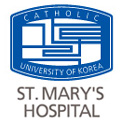
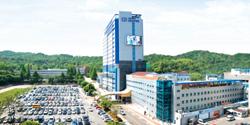
Office Hour
We are open on Saturday mornings, and closed on National holidays and Sundays.
| MON | TUE | WED | THU | FRI | SAT | SUN |
|---|---|---|---|---|---|---|
| 10:00 ~ 19:00 | 10:00 ~ 19:00 | 10:00 ~ 19:00 | 10:00 ~ 19:00 | 10:00 ~ 19:00 | 10:00 ~ 16:00 |
our Specialty
Cerebral Infarction

Approximately 60~70% of stroke is due to cerebral infarction, which involves the condition when the brain cannot get enough blood flow due to clogged cerebral vessels. As the blood carries necessary nutrients and oxygen to the brain cells, cerebral ischemia permanently damages brain cells near vascular legions. Cerebral infarction is classified as thrombotic cerebral infarction, embolic infarction, hemodynamic ischemic stroke, or lacunar infarction depending on the cause of the disease, however, it displays common symptom of neurological abnormalities due to brain cell damages regardless its classification.
Recent development in medications and surgical technique as well as continuous education about the disease has helped improving the result of cerebral infarction treatment. Prompt diagnosis and treatment is crucial for cerebral infarction as the disease itself damages nerve. Method of treatment for each individual is unique as his/her type, location, size of infarction, and the time of hospital admission from the onset of the symptom is different.
For acute cerebral infarction, the injection of thrombolytics into the vein can unclog the problem area if the patient is admitted to the hospital within 3 hours of the onset of symptoms. For most of patients who didn’t make it to the hospital within 3 hours, hospitalization is necessary to undergo the treatment with anticoagulant, antithrombotic, or antiplatelet agent. In addition, rehabilitation therapy along with the medication can maximize the therapeutic effect.
As for the surgical method, artery endothelial removal is performed to get rid of thrombus or embolus inside the internal carotid artery or cerebral artery. Bypass surgery grafts branches of external carotid artery, peripheral artery or vessel to vascularize clogged area. If there is any chance of brain hernia because of the intracranial pressure and the area of infarction being too high or wide, emergency decompressive craniectomy may be performed. Recently, the method of dissolving blood clots by administering thrombolytics through the catheter or removing thrombus or embolus by inserting device directly into the vessels along with angiography is used for better result.
Stroke

Diagnosis • Treatment of Stroke within 20 minutes of Hospital Admission
Swift action can save stroke patient’s life and determines the degrees of aftereffect, thus, prompt medical treatment followed by accurate diagnosis is the core of stroke patient care. Because of this, Incheon St. Mary’s Hospital of the Catholic University of Korea has established the first specialized stroke care unit and neurosurgical center in Incheon area, and operated special task force team for stroke care to strictly follow the guideline of treating stroke patients within 20 minutes of hospital arrival since 2005. Special task force team for stroke care consists of 50 staffs including 21 professors specialized in neurology, neurosurgery, rehabilitation, radiology, Korean medicine, and neuropsychiatry provides immediate and high quality medical treatment 24/7. Neurosurgical Center of Incheon St. Mary’s Hospital is also equipped with state-of-the-art stroke diagnosis and treatment device of 64-Channel 3D MDCT, 3T MRI, Angiography, Neuro-Microscope, Navigator, 16-Channel Operation Monitor, and Ultrasonic TCD. Neurological Center of Incheon St. Mary’s Hospital has received top rating on Acute Stroke Treatment Adequacy Assessment by Health Insurance Review and Assessment Service for 5 consecutive years since 2006.
Minimally Invasive Endoscopic Brain Surgery for Brain Tumor
Incheon St. Mary’s Hospital performs endoscopic surgery for cranial brain tumor such as meningioma, pituitary adenoma, and craniopharyngioma. “Endoscopic brain tumor surgery inserts the endoscope through the patient’s nostril to approach tumor area from the outside of the brain in order to remove the tumor without damaging brain tissue, or inserts the endoscope through the 2~3cm excision made on the crease of the eyebrow to remove the tumor. Only around 10 medical institutions in Korea are able to perform this type of advanced surgery,” said Director HAN Youngmin of Neurological Center. Other brain surgeries are also performed after precisely locating tumor using the latest medical devices such as Neuro-Microscope and Navigator. “Unlike conventional brain surgery, minimally invasive endoscopic surgery barely leaves scars, thus, patient satisfaction is very high,” said Director Han.
Neuropathic pain as well as trigeminal neuralgia is treated by radiosurgery using Novalis Tx. Torticollis that accompanies lateral flexion contracture causing one’s head tilted to one side is treated by deep brain stimulation along with medication and botox injection. Deep brain stimulation is a surgical treatment involving implantation of a type of pacemaker device to generate impulse for electrical stimulation on the part of the brain associated with torticollis. “Deep brain stimulation is very effective as it minimizes nerve damage and can be replaced with new treatment at any time,” said Professor HEO Ryeung.
Torticollis

Torticollis is a stiff neck associated with muscle spasm. It accompanies the condition of one’s head tilted to one side due to lateral flexion contracture of the cervical spine musculature. Although torticollis has generally been treated with medications or muscle relaxing injections, these non-surgical treatments often cannot cure torticollis completely.
Typical symptom of torticollis is muscle tension dystrophy it occurs due to disorders of central nerve system that controls tension and contraction of the muscles. Torticollis patients suffer from discomfort and pain as well as psychological problem. The cause of torticollis is yet to be identified, but the functional abnormality of basal ganglia in the brain is largely estimated as the possible cause of the disease. The basal ganglia are associated with the function of voluntary motor control. Thus, the damage on the basal ganglia sends out incorrect signal inflicting involuntary contraction, relaxation and tremor of muscles. Torticollis is easily mistaken for a stroke or other disease as it often makes sudden appearance on adults. Epidemiological study in Europe indicates that over 50 million patients across Europe didn’t recognize their muscle tension dystrophy was due to torticollis at the beginning.
Blinking eyes frequently, jaw or tongue tremor, and stiffness in hand or arm muscles when playing instrument or writing are also the representative symptoms of torticollis. Medications and topical Botox injections are prescribed for early stage or mild case of torticollis. Especially repeated Botox injection reduces its therapeutic effect and the intervals between injections because of immune response in vivo. Therefore combined therapy of psychiatric consultation, rehabilitation, and Korean medicine must be provided appropriately depending on the patient’s condition.
If the symptoms do not improve with conventional treatment, surgery must be performed. There are two surgical methods – selective peripheral nerve resection and deep brain stimulation. Selective peripheral nerve resection cuts off peripheral nerves that control neck muscles. This surgery delivers immediate result for patients suffering from stiff neck, but it has the disadvantages; possibility of damaging peripheral nerve due to complex surgical procedure and difficulties in pain management. On the contrary, deep brain stimulation implants a type of pacemaker to generate impulse for electrical stimulation on the part of the brain associated with torticollis. Deep brain stimulation is gaining popularity recently as it minimizes nerve damage and can be replaced with new treatment at any time.
our Doctors
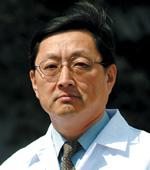
DR. PARK, Young-sup, Neurosurgeon
• Specialized in Brain Tumor, Occlusive Cerebrovascular Disease, Cerebral Hemorrhage, Cerebrovascular & Spinal Cord Vascular Malformation, Headache
• 2010~11 Director of Spine Center of Incheon St. Mary’s Hospital
• 2007 Medical Director of Incheon St. Mary’s Hospital
• 2006 Director of HIFU Knife Center of Incheon St. Mary’s Hospital
• 2005 the 11th Chair of Medical Departments
• 2001 the 2nd Chief of Obligations and Coordination
• 1988 M.S., Graduate School of Medicine, the Catholic University of Korea
• 1973 Graduated from School of Medicine, the Catholic University of Korea
• Member, the Korean Neurosurgical Society
• Board Examination of Korea Committee Member, the Korean Neurosurgical Society
• Review Committee Member, Industrial Accident Compensation Insurance
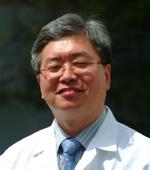
DR. JEONG, Dong-sup, Neurosurgeon
• Specialized in Brain Tumor, Trauma, Lumbar Disc, Functional Neurosurgery, Headache
• 2009 Licensed Specialist in Critical Care Medicine
• 2006 Outstanding Research Award, the Korean Neurosurgical Society
• 1999~2000 Trained at Brain Tumor Research Center, University of California, USA
• 1999 M.D. in Neurosurgery, Graduate School of Medicine, the Catholic University of Korea
• 1990 Licensed Specialist in Neurosurgery, Seoul St. Mary’s Hospital, the Catholic University of Korea
• 1985 Graduated from School of Medicine, the Catholic University of Korea
• Member, the Korean Neurosurgical Society
• Member, the Korean Brain Tumor Society
• Member, the Korean Society for Pediatric Neurosurgery
• Member, the Korean Society of Critical Care Medicine
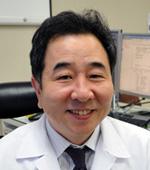
DR. HEO, Rye-ung, Neurosurgeon
• Specialized in Stereotactic Capability (Parkinson’s & Facial Spasm), Radiosurgery
• 1999 M.D., Graduate School of Medicine, Yonsei University
• 1991 M.S., Graduate School of Medicine, Soonchunhyang University
• 1983 Graduated from School of Medicine, Soonchunhyang University
• Director, Examination Board Committee, Insurance Commissioner, and Compilation Committee of the Korean Neurosurgical Society
• Jury, Journal of Korean Neurosurgical Society
• Director of General Affairs, the Korean Society for Stereotactic and Functional Neurosurgery
• Executive Director, the Korean Pain Research Society
• Secretary General, Asia-Pacific Society for Stereotactic and Functional Neurosurgery
• Auto Insurance Claim Review Committee
• The Central Pharmaceutical Affairs Council Review Committee
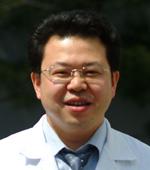
DR. HAN, Young-min, Neurosurgeon
• Specialized in Cerebrovascular Disease (Stroke), Cranial Base Surgery, Skull Base Surgery (Skull Base Tumor & Cerebrovascular Disease), Peripheral Vascular Disease
• 2011 Medical Director of Incheon St. Mary’s Hospital
• 2009-11 Director of Neurological Center of Incheon St. Mary’s Hospital
• 2009 M.D. in Neurosurgery, Graduate School of Medicine, the Catholic University of Korea
• 2000 M.S., School of Medicine, the Catholic University of Korea
• 1984 Graduated from School of Medicine, the Catholic University of Korea
• Member, Korean Board of Neurosurgery
• Korean Society of Cerebrovascular Surgeons
• Korean Skull Base Society
• Korean Association of Brain Injury
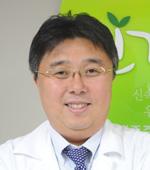
dR. JANG, Kyung-sool, Neurosurgeon
• Specialized in Cerebrovascular Diseases (Cerebral Aneurysm, Hypertensive Intracerebral Hemorrhage, Cerebral Vascular Malformations, Cerebral Infarction), Cerebrovascular Surgery (Cerebral Aneurysm Coil Embolization, Cerebral Vascular Malformations Coil Embolization, Cerebrovascular Stenosis Balloon Stent-Graft), Head Trauma Disorders, Moyamoya Disease, Peripheral Vascular Disease
• Member, the Korean Neurosurgical Society
• Associate Professor, Incheon St. Mary’s Hospital of the Catholic University of Korea
• 2006 M.D., School of Medicine, the Catholic University of Korea
• 2004 M.S., School of Medicine, the Catholic University of Korea
• 1989 Graduated from School of Medicine, Wonkwang University
• Member, Korean Society of Cerebrovascular Surgeons
• Member, Korean Society of Intravascular Neurosurgery
• Member, the Korean Brain Tumor Society
• Member & Insurance Committee, Korean Society of Stereotactic Function